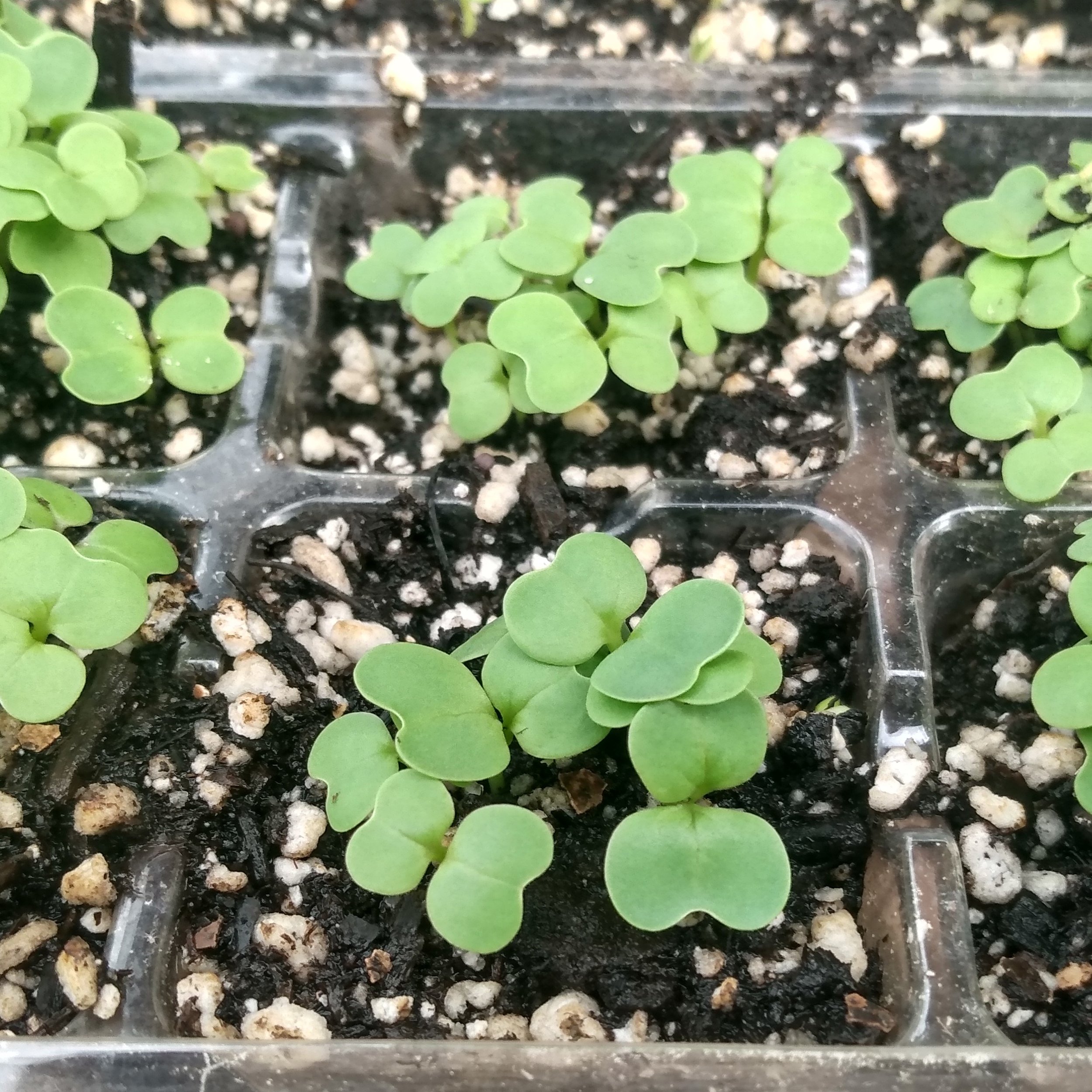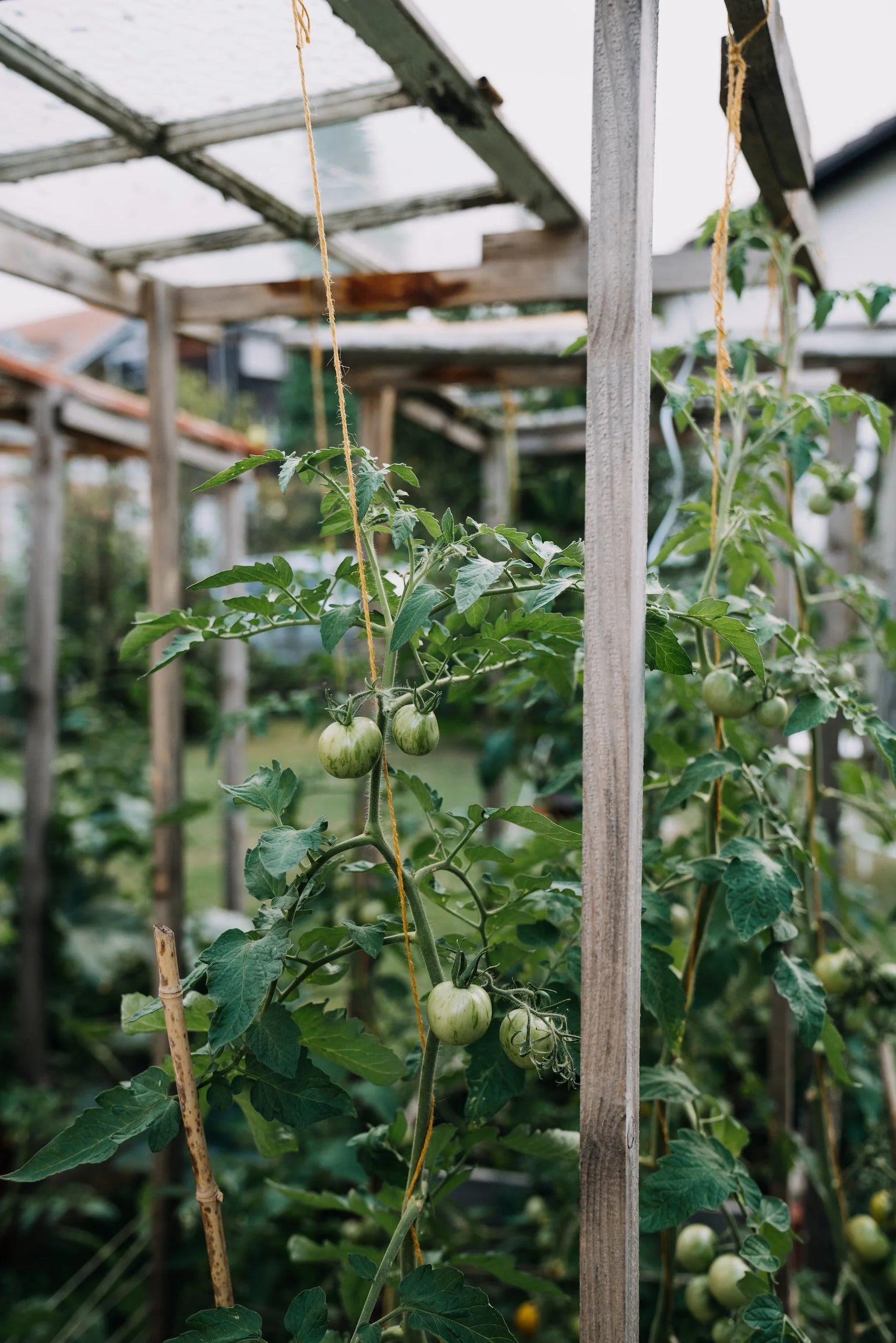Year Round Gardening: Lessons Learned
Being a year-round gardener is possible here in the Wilmington, NC area. I have found that with a little planning, it’s possible to eat from your garden every single day. In my transition from a NY gardener to a gardener here in the Wilmington, NC area, I have learned a few simple lessons that have dramatically changed my mindset and increased my garden’s yields.
1. If you want to keep harvesting, you need to keep planting.
Thomas Jefferson is said to plant a thimbleful of lettuce seed every Monday. While that is not necessary for a backyard kitchen garden, the concept there is simple, that if you plant as much and as often as you harvest, you’ll always have something ready to harvest. This can be accomplished in several ways, either by planting the same kind of crops a few weeks apart, to extend the harvest, or planting a mix that will mature at slightly different times. Either way, I try to plant something from seed at least once a week. It might be something as simple as sprinkling carrot seed in the area just vacated by some spent tomato plants, or putting some lettuce seeds in a cup of soil in anticipation of the fall planting season. It’s smart to have a few extra plants ready to fill in empty spots, so you are maximizing the productive space of your garden.
2. Your plants are only as healthy as your soil
One mindset shift that has changed the way I see the garden is to think of myself not as a vegetable gardener, but as a soil gardener. My top priority is healthy soil, and the plants I grow give me feedback. I have come to respect my soil, to work towards a healthy ecosystem teeming with life, rather than just a medium in which I grow my plants. I no longer take chances with chemicals or water my plants from the tap, instead I am focusing on bacterial and fungal health, the use of home-made compost, and avoidance of chemicals. Prioritizing healthy soil has required some financial cost this year, as getting set up with worm composting and rain barrels is not free, but I see it as an investment in the long-term health of my soil, which will lead to healthier plants for years to come.
3. Plants want to grow, it’s my job to give them the right environment
As a gardener, I am always looking for ways to improve the environment in which my plants are growing. They want to grow, their goal is to make mature seed, and I want them to grow, so how can I make the garden the best place possible for them? At planting time, I am always considering what my plants will need as far as spacing (considering how big they will get - that tiny tomato really does need a 6 foot cage!) and of course, soil health. Keeping diseases from getting out of hand by spraying with a preventative spray as soon as I see a problem, and hand-picking bad bugs when I see a few, so they don’t get out of control. Sometimes in the heat of summer a bit of shade will help keep the plants from being stressed, and this can be provided by an umbrella, shade cloth, or simply planting sun-loving plants in front of the ones that need a break from the sun. Placing trellises for vining crops will keep them off the ground, and this will decrease their susceptibility to disease. Anything I can think of to set my plants up for success.
4. Communicate with plants in a language they speak
Your plants speak two languages: chemistry and pruning. I like to think of chemistry as telling your plants how to grow, and pruning is telling them how not to grow. Plants that have a chemistry problem will appear stressed or stunted, or they will be growing in an undesirable way. They can be stressed from any number of problems, like over or under watering, poor fertilization, or soil without bacterial and fungal support. They can grow in a way you don’t want, like tomatoes with too much nitrogen will make lots of leaves but no tomatoes, or the carrots that have large tops but no roots, or maybe they just stop growing. When you water properly, fertilize carefully, and provide the nutrients your plants need, you are using chemistry to communicate how they should respond.
Pruning communicates in a few different ways, but it can be summed up as telling your plant “don’t grow that way”. Your plant will respond by putting more energy into growth elsewhere. Some plants will branch out and grow in a more compact and healthy way if you prune off the top, young peppers and most herbs, for example. Other plants need to be pruned to stay on a trellis. Pruning is very important to allow for airflow, especially in the hot summer weather for plants that are prone to fungal diseases (tomatoes, I’m looking at you!). Pruning is not as complicated as it sounds, once you start thinking of it as just telling your plants to focus growth elsewhere.
5. Every plant has an optimal season for growth, and it’s easier to grow plants that love the season they’re growing in.
Gardening in a climate with a long growing season gives us plenty of time to wait until the weather is perfect for our plants to thrive. When I gardened in NY, I had to plant tomatoes before our last frost and spend about a month covering and uncovering them every morning and evening, or they would be covered with green tomatoes at our first frost in Sept-October, very disappointing. Here in the Wilmington NC area, our warm/hot growing season is so long, we don’t have to bother with any of that. There is a perfect season for each crop you want to grow, and timing your crops for the coming season will maximize your harvests with minimal work. Once you know what to grow for the next season, it’s as simple as planning what you want to grow and starting some seeds. It’s a good idea to start your seeds about a month before you will be planting them in the garden, as that will allow maximum productive use of your space and you can baby your seedlings in smaller containers, bringing them inside if the weather starts misbehaving.
6. There is no failure, only feedback
Don’t get upset when things don’t work out the way you thought, get curious, Ask yourself, what feedback is this plant giving me? Every season is full of lessons to learn. This year, summer of 2022 I have learned the following lessons:
Don’t buy cheap bagged soil - even “organic” doesn’t mean it’s free of grubs, and they can do damage to an entire garden bed.
Rotate your tomatoes! The bed that has had tomatoes for three years needs to grow something different to let some of the blight spores decrease in that soil.
Peppers in grow bags 10x bigger than ones in ground – grow more peppers in grow bags next year!
Cilantro seed didn’t germinate, I need to get fresh seed for fall plantings
Bamboo trellis fell over from the weight of the vines – budget for a sturdy trellis next year.
One determinate tomato variety still producing after 6 months – grow that one again!
I could probably come up with a hundred more for every year I have gardened. I don’t believe it’s productive or helpful to have a “my garden failed” attitude, no matter what happens. Your plants want to grow, and they’re giving you feedback. Sometimes they give you feedback by not growing well, or by getting diseased, or not germinating at all. But if you keep a feedback not failure mindset and always be asking yourself “what lesson can I learn from this?” you will be on your way to becoming a better gardener.
If you’re interested in having more help getting your garden to maximum production - and learning from someone else’s mistakes - we offer coaching sessions for New Hanover and Brunswick County gardens. At a coaching session, your coach will test your soil, evaluate your site’s unique setup, and discuss your hopes for your garden’s future. You will learn about the seasons of gardening here in the Wilmington, NC area and will be given a curated list of plants that grow well here. Your coach will take this information, along with the list of plants you want to grow, and make you a custom planting plan, along with recommendations for soil amendments and a shopping list for your next planting season.





